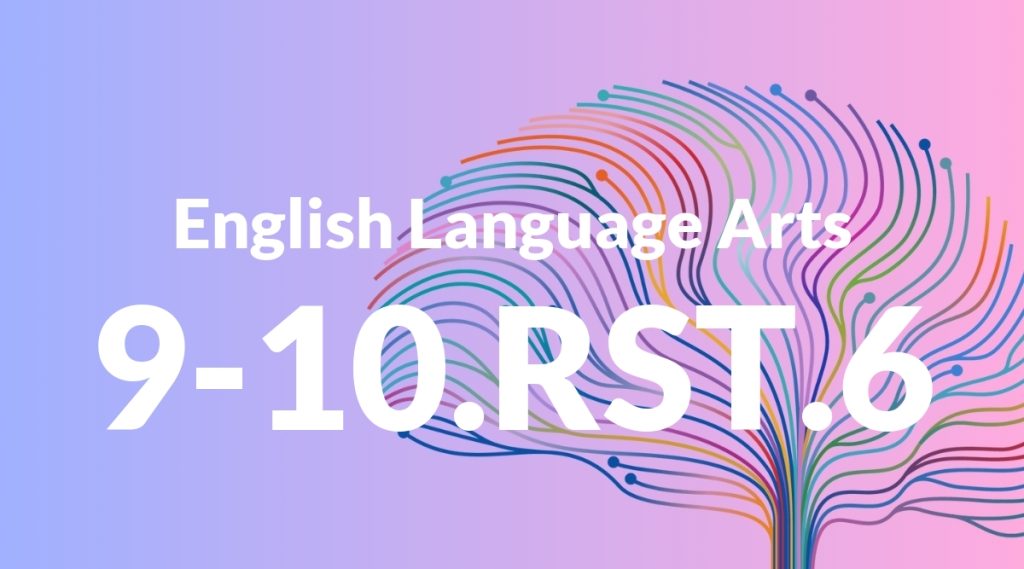Standard: 9-10.RST.6 – Analyze the author’s purpose in providing an explanation, describing a procedure, or discussing an experiment in a text, defining the question the author seeks to address.
Grade level: Grade 9-10
Subject: English Language Arts
Domain: Science & Technical Subjects
Teacher Overview
This standard focuses on helping students analyze the purpose behind various scientific texts. Understanding the author’s intent is crucial for deeper comprehension and critical evaluation of scientific literature. This skill is vital for students as it prepares them for advanced studies and real-world applications in scientific fields. Students should have a solid understanding of basic text analysis and be familiar with different text structures. This foundational knowledge will support their ability to discern the author’s purpose in more complex scientific texts.
Mastering this standard will enable students to critically evaluate scientific texts and understand the underlying purposes. This skill is essential for advanced academic work and professional scientific communication.
Common Misconception 1
A common misconception is that the author’s purpose is always to inform. This is incorrect because authors may have various intents, such as explaining a procedure, describing an experiment, or discussing findings. Recognizing these different purposes is key to accurate text analysis.
Intervention 1
Use examples of scientific texts with clear purposes and have students identify language cues and context that indicate the author’s intent. Practice this skill with diverse texts to build proficiency.
Common Misconception 2
Another misconception is confusing the author’s purpose with personal interpretation. Students might project their own understanding onto the text rather than identifying the author’s true intent. This can lead to misinterpretation of the text’s purpose.
Intervention 2
Implement structured analysis frameworks that help students separate their personal reactions from the author’s intent. Use guided questions and discussions to reinforce this distinction.
Prerequisite Knowledge
Students should understand basic text analysis, including identifying main ideas and supporting details. They should also be familiar with different text structures such as cause and effect, problem and solution, and descriptive texts.
Subsequent Knowledge
Students will develop advanced critical thinking skills, enabling them to evaluate the effectiveness of scientific arguments and methodologies. They will also be able to create their own scientific texts with clear purposes and well-defined questions.
Instructional Activities
- Analyze a variety of scientific texts to identify the author’s purpose.
- Create graphic organizers to map out the author’s intent and supporting details.
- Conduct peer reviews of scientific writing, focusing on clarity of purpose.
- Engage in group discussions to explore different interpretations of the author’s intent.




